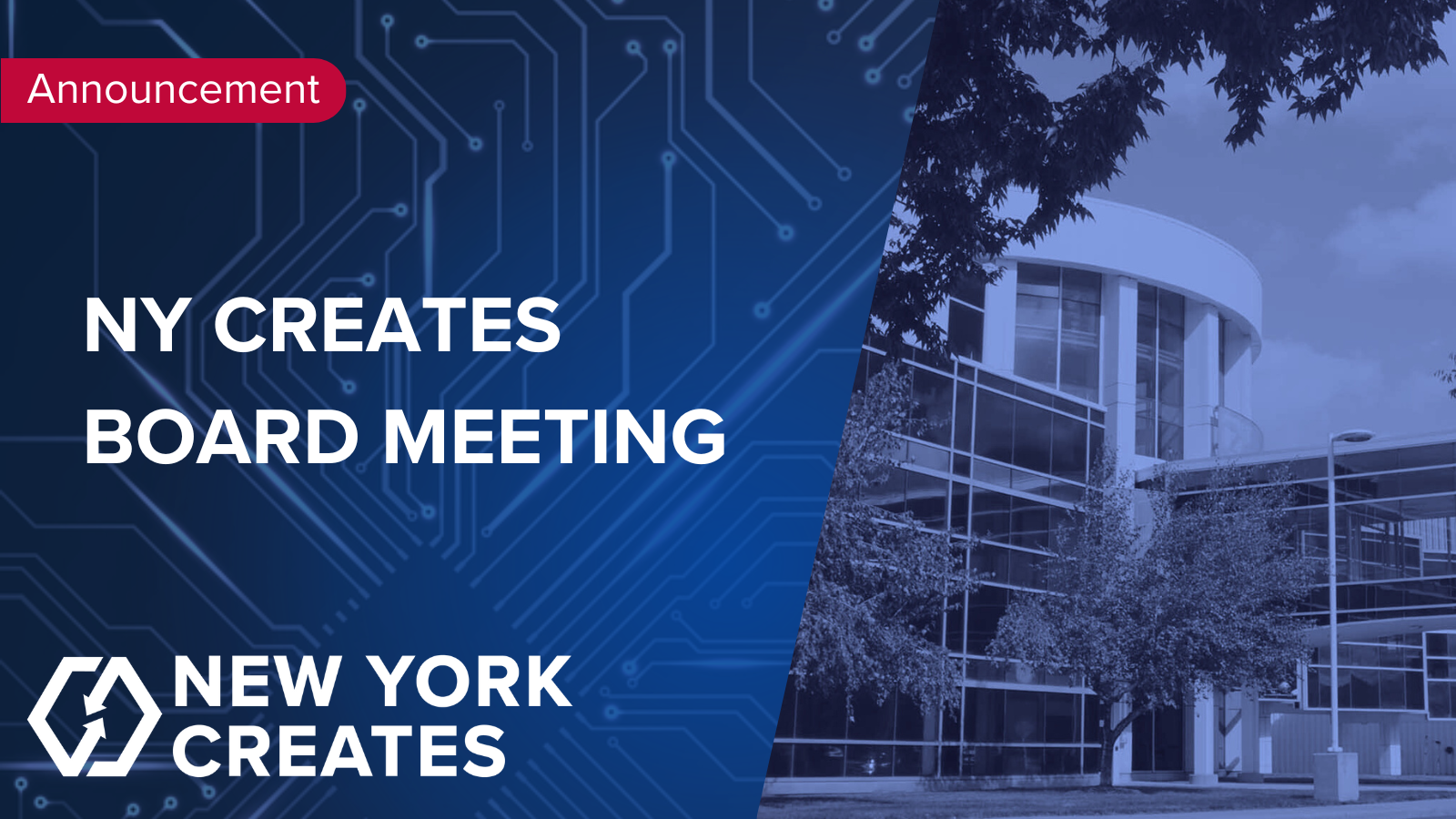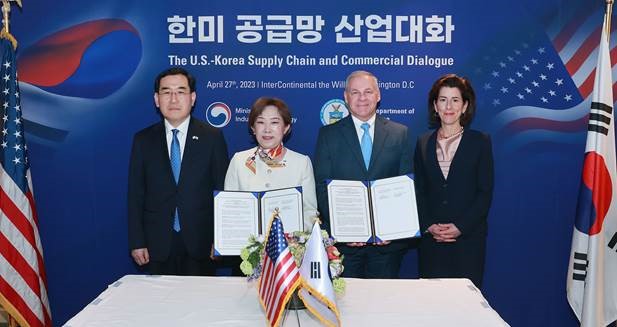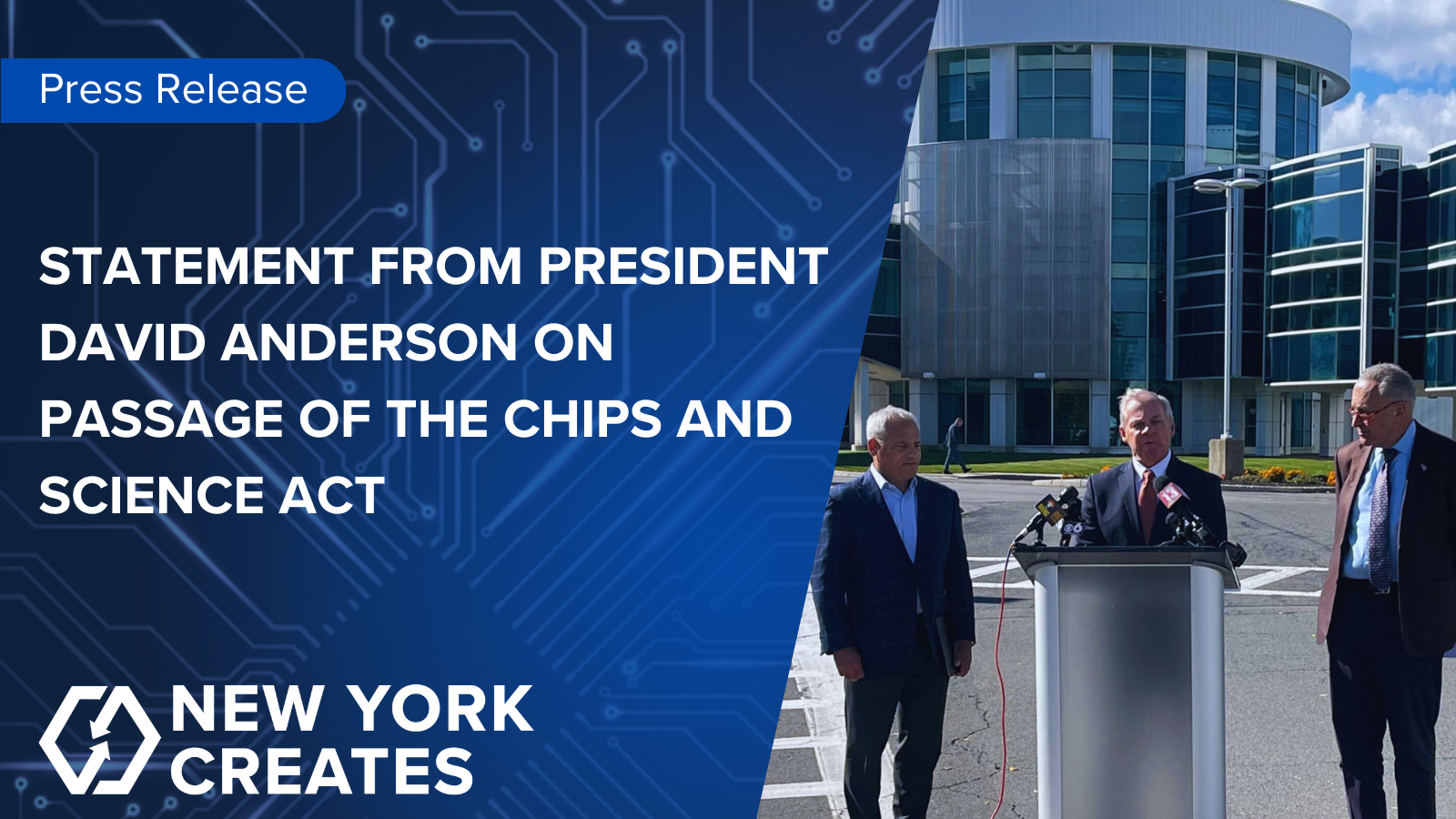Albany, NY
Governor Kathy Hochul today announced the Department of the Army has approved the Veteran Semiconductor Training and Experience Program, or VET S.T.E.P., as an official Career Skills Program, part of the Department of Defense SkillBridge network. These programs assist service members, from all branches nationwide, as they transition out of the military and into civilian careers by providing industry-specific training, internships and other work experience. VET S.T.E.P.’s outreach to military installations will serve to educate service members about the employment opportunities available, demonstrate the transferability of military training and discipline to the microelectronics manufacturing field, and provide them with industry-specific onboarding to give participants the skills they need to land the job.
“In New York, we are deeply committed to supporting the brave men and women who serve and protect our country, and we are forever thankful for their service,” Governor Hochul said. “Today, we reaffirm our commitment to New York’s service members with concrete action, and the new VET S.T.E.P. program is the latest example of our workforce initiatives focused on helping veterans find meaningful, long-term employment after leaving the military. This new program will serve as a model for the rest of the nation to follow, and will put veterans on the path toward a successful career while strengthening the U.S. semiconductor industry.”
NY CREATES President David Anderson said, “We are proud to launch the new VET S.T.E.P. initiative, which will honor active duty service members and veterans by providing them with opportunities for long-term, rewarding careers in the semiconductor industry. The men and women who serve our country are talented, hardworking, and dedicated – all qualities that are sought by global industry leaders. VET S.T.E.P. will offer a comprehensive training and experience program that connects veterans to companies and careers – and that’s a win for everyone involved.”
Empire State Development President, CEO and Commissioner Hope Knight said, “The new Vet S.T.E.P. program will generate new opportunities for our veterans by providing much needed skills that will amplify our high tech workforce, a key component to growing the semiconductor industry in New York State. I applaud our partners at NY CREATES for developing this innovative program which will ensure a robust talent pipeline for the future.”
New York State Division of Veterans’ Services Director Viviana DeCohen said, “New York remains committed to being the best state for service members and veterans to call home. A key component of this is the ability to provide well paying and fulfilling work for these individuals. The VET S.T.E.P. initiative will be a great source of rewarding work by providing careers for those who have done so much for our State and Nation.”
Typically, companies offer SkillBridge programming to fill their own job vacancies. VET S.T.E.P. is uniquely focused on building an ecosystem, working with several industry partners based in New York State to build a skilled technician pipeline for the state and the nation’s growing semiconductor industry. VET S.T.E.P. recruitment will bring in military personnel from across the U.S., with its primary connection to Fort Drum, and provide two weeks of technician training followed by placement in an eight week internship with one of NY CREATES many industry partners.
VET S.T.E.P.’s training, developed in partnership with Mohawk Valley Community College, will be held at the Albany Nanotech Complex. There, service members will have access to the most advanced, publicly-owned labs in the U.S., a working foundry, state-of-the-art equipment and on site industry partners.
The first training cohort is scheduled for September 2022. Initially, three cohorts of 12 service members are planned for the next 12 months. Once the program is fully established, five cohorts training up to 60 service members can be supported annually. The program is funded by the National Science Foundation, enabling service members to receive this training at no cost. Prior to VET S.T.E.P., NY CREATES offered “mini” Advanced Manufacturing Technician workshops to Fort Drum soldiers and veterans. Since 2016, 90 have been trained.
Each year approximately 200,000 members of the U.S. Armed Forces, stationed in over 140 military installations in the U.S. and overseas, separate from active duty. It has been well documented that far too many veterans struggle to find meaningful employment after leaving military service. The Department of Defense’s SkillBridge programs provide retiring and transitioning service members with the opportunity to participate in industry training programs during their last 180 days of service, while covering the service member’s pay and benefits.
VET S.T.E.P. closely aligns with the state’s unwavering commitment to those who served and the initiatives that help and support the more than 714,000 veterans and their families who call New York State home. At least 60 unique state benefits are currently available to veterans, service members, and their families, including educational benefits, and priority access to job assistance, to accessing to service-connected disability compensation, and more.
If you are interested in participating in VET S.T.E.P., please contact Kate Alcott at alcottk@sunypoly.edu or visit https://ny-creates.org/vet-s-t-e-p-semiconductor-training-experience-program/ for more information.
For more information on services available to veterans in New York State, please visit https://veterans.ny.gov/.
This initiative builds upon the Governor’s robust commitment to workforce development and training for in-demand skills. In her State of the State address, the Governor announced the New York State Office of Strategic Workforce Development, which will be charged with improving the State’s workforce development programs and practices to better align with the needs and priorities of today’s employers. The Governor committed significant multi-year funding to support the Office, which was approved in the FY2023 budget, and a search is underway to hire personnel to implement and lead the State’s ambitious efforts.
Senator Chuck Schumer said, “Our soldiers already protect America’s future on the battlefields, and now thanks to the VET S.T.E.P program New York’s veterans can continue to preserve America’s global leadership and national security through good-paying careers in semiconductor manufacturing right here in the Empire State. New York is home to a top-notch workforce, which this program will further grow to tap into the major expansion in the microchip industry driven by my U.S. Innovation and Competition Act and the historic $52 billion in federal incentives I’ve included for domestic semiconductor R&D and manufacturing. A job is one of the most important parts of a veteran’s return to civilian life, and this program will ensure our vets aren’t left behind and can get the training and skills they need to be successful in their life after the military and to be a part of a fast-growing industry in the state.”
Senator Kirsten Gillibrand said, “After dedicating years to serving our country, too many veterans leave the military and struggle to find meaningful employment. VET S.T.E.P. is an innovative program that will help veterans transition into civilian careers in growing fields and will play a key role in developing talent for New York’s semiconductor industry. I thank Governor Hochul for her work getting this program off the ground, and as chair of the Senate Armed Services Personnel Subcommittee, I’ll keep fighting to make sure our New York veterans have the support they need to reintegrate into civilian life.”
Representative Jerrold Nadler said, “Preparing our service members for careers in microelectronics is an excellent decision. As our nation continues to innovate in renewable energy and technology, it is imperative that we build the infrastructure that we need to stay competitive globally. Governor Hochul has been a tremendous leader in keeping New York at the forefront of semiconductor development and manufacturing, and I look forward to continuing to work with her.”
Representative Paul Tonko said, “Investing in the semiconductor industry offers an incredible opportunity to bolster domestic supply chains and drive American competitiveness, all while creating good-paying manufacturing jobs. I’m working to deliver these critical investments at the federal level, including fighting to advance the historic CHIPS for America Act and my Micro Act under the House passed America COMPETES Act. This pioneering training initiative announced today will also advance this growing industry in our region, which is why I was proud to vote to fund this program under our last appropriations package. I thank Governor Hochul for her work facilitating this program that will strengthen our economy, and support our veterans.”
Representative Joe Morelle said, “As I member of the House Armed Services Committee, I am committed to supporting our servicemembers at every step of their career, which is why I appreciate Governor Hochul’s commitment to providing the training necessary to ensure a successful transition into civilian life through VET S.T.E.P. New York. Expanding the SkillBridge program to include workforce development in critical semiconductor technology will build New York’s regional economic resilience and make our area a global competitor in this field.”
SUNY Interim Chancellor Deborah F. Stanley said, “Veterans, though coming from wide-ranging fields within their branches of service, typically share many of the same attributes: attention to detail, discipline, and a willingness to work harder. After dedicating years of their lives to a specific skillset, a Veteran may find the skill does not directly translate to a job in civilian life. I am proud to say we are helping to bridge that gap, to fully utilize the gifts and talents these highly driven individuals have to offer to the New York State workforce. My thanks to Governor Kathy Hochul for recognizing the talents and potential of our Veterans, and connecting them to their next mission.”
Mohawk Valley Community College President Randy VanWagoner said, “Since 1946, as one of five post-secondary institutions established on an experimental basis after World War II, Mohawk Valley Community College has served U.S. veterans by providing valuable resources and supporting their educational success. We are proud to be part of this project and continue the tradition of helping veterans make a successful transition back into the community and preparing for the future.”
Fort Drum Transition Services Manager Craig A. McNamara said, “There is no better way to appreciate our Soldiers, Veterans, and their Families’ sacrifice than equipping them to live meaningful productive lives after their service to our nation. VET S.T.E.P offers significant opportunity for professional growth for our Soldiers, Veterans and Families, and demonstrates valued collaboration between New York State, the Fort Drum Transition Assistance Program, SUNY, NY CREATES, and industry.”
Indium Corporation Talent Acquisition Supervisor Jim McCoy said, “Indium Corporation is excited to be an industry partner with the VET S.T.E.P. Career Skills Program to help armed forces members from across the country make permanent homes in our communities. We recently welcomed two service members from Fort Drum to our team and look forward to helping many more find fulfilling careers in the semiconductor industry through this collaboration.”
GlobalFoundries Human Resources Operations Vice President Mike Leary said, “We applaud Governor Hochul on the approval of VET S.T.E.P. as an official Career Skills Program. We value the leadership, communication, decision-making, and technical skills of service members, and this program will help to connect vital training and experiences with industry partners like GlobalFoundries as we support veterans and their career goals.”
Wolfspeed Chief Human Resources Officer Margaret Chadwick said, “Wolfspeed is committed to hiring a diverse group of individuals with a wide variety of backgrounds and experiences. As we continue to ramp up production at our Silicon Carbide semiconductor manufacturing facility in Marcy, New York, programs such as VET S.T.E.P. are instrumental in recruiting top talent. Candidates with a military background are an outstanding fit for our team-oriented culture. We are excited to be one of the employers actively involved in the program and look forward to expanding our partnership with new additions to the team.”
###











